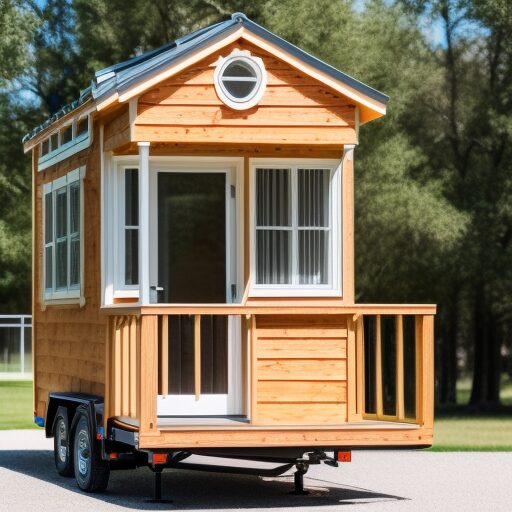The Advantages of Micro-Housing and Tiny Living
Micro-Housing where urbanization is rising, housing costs are soaring, and environmental concerns are at the forefront, a revolutionary trend has emerged as a beacon of hope: micro-housing and the art of tiny living. With a growing number of people opting for homes that typically range from 100 to 400 square feet, this trend is more than just a fad; it’s a solution that addresses multiple challenges simultaneously. From economic benefits to environmental consciousness and a stronger connection with nature, the advantages of tiny living inspire a profound shift in how we envision the concept of home.
The Rise of Micro-Housing
As housing costs continue to surge in many parts of the world, the appeal of micro-housing has skyrocketed. These ingeniously designed spaces prioritize functionality and efficiency without compromising on comfort. What was once considered unconventional is now becoming a mainstream choice as individuals seek alternative solutions to escape the shackles of excessive mortgages.
Economic Advantages
One of the most compelling arguments for tiny living is its financial relief. With significantly lower upfront costs and reduced monthly expenses, tiny homes make homeownership an achievable dream for many who would otherwise be priced out of the market. Moreover, the minimalistic lifestyle accompanying tiny living encourages individuals to declutter their possessions, leading to less spending on unnecessary items.
Reduced Energy Bills and Maintenance
Tiny homes are inherently energy-efficient due to their size and design. The smaller footprint requires less energy to heat, cool, and power the space, resulting in substantial savings on utility bills. Additionally, with fewer square feet to maintain, homeowners can bid farewell to the time-consuming and expensive upkeep that larger houses demand. This translates to more leisure time, reduced stress, and a better work-life balance.
Sustainability at its Core
In a world of environmental challenges, the tiny house movement offers a way forward. The smaller scale of these dwellings translates to a significantly lower carbon footprint. With fewer materials needed for construction and reduced energy consumption over the home’s lifetime, tiny living aligns seamlessly with sustainable principles. These spaces often incorporate eco-friendly features, such as solar panels and rainwater harvesting systems, further amplifying their positive impact on the planet.
Closer to Nature
The allure of tiny living extends beyond practicality and nurtures a deeper connection with the natural world. Many tiny homes are designed to emphasize outdoor living, incorporating features like expansive windows, balconies, and rooftop gardens. With limited indoor space, residents are encouraged to explore and enjoy the surrounding environment. This symbiotic relationship with nature promotes mental well-being, creativity, and a profound sense of serenity.
Personal Preferences and Needs
While the benefits of tiny living are undeniable, it’s essential to recognize that this lifestyle isn’t a one-size-fits-all solution. Before embarking on the journey of micro-housing, individuals must carefully assess their personal preferences, needs, and priorities. Some may find solace in the simplicity of tiny living, while others might struggle with the transition. It’s crucial to balance embracing a minimalist lifestyle and ensuring that your living space nurtures your well-being.
Conclusion
The revolutionary micro-housing and tiny living trend reshapes how we perceive homeownership and sustainability. With economic advantages, reduced energy consumption, and a stronger connection to nature, tiny homes offer a promising path forward in a world where space is scarce and environmental responsibility is paramount. As we navigate these unprecedented times, the tiny house movement reminds us that bigger isn’t always better and that home is not merely a physical space but a reflection of our values and aspirations.


